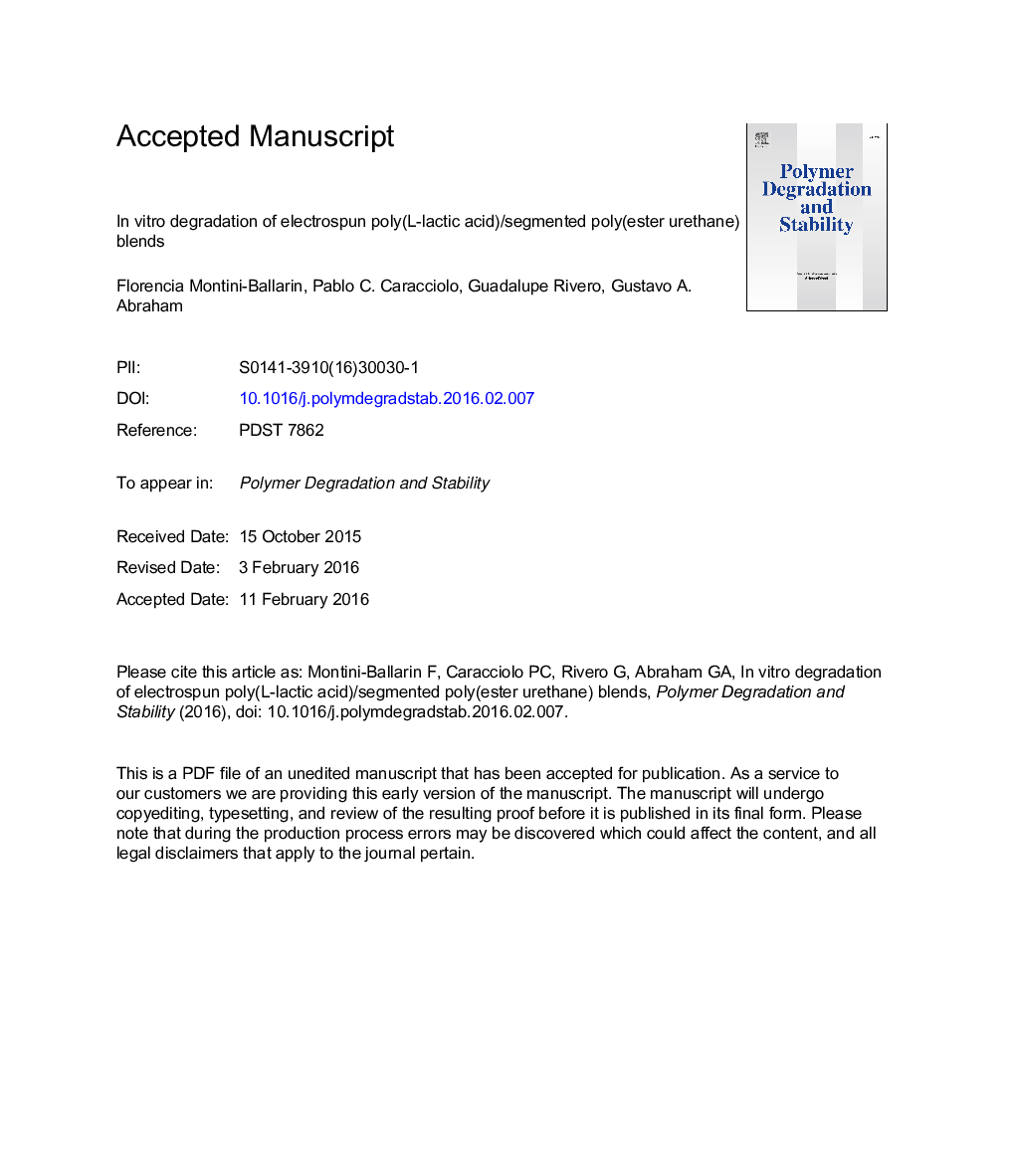| Article ID | Journal | Published Year | Pages | File Type |
|---|---|---|---|---|
| 5201271 | Polymer Degradation and Stability | 2016 | 38 Pages |
Abstract
Scaffold degradation behavior is one of the main aspects to be considered in tissue engineering applications. The hydrolytic in vitro degradation of compliant biomimetic electrospun bilayered vascular grafts made of poly(l-lactic acid) and segmented poly(ester urethane) blends was studied. Two polymeric blends were selected based on the natural arteries collagen and elastin composition, structure and functionality. The variation of molecular weight, and thermal and surface properties of the blends and their plain polymers, were analyzed and related to the structural and morphological changes taking place during degradation. The low initial crystallinity and high hydrophilicity of the blends, along with a synergetic outcome produced by blending, led to a higher molecular weight loss. Even more, it was observed that a bilayered graft made from these blends would degrade evenly as a whole. Moreover, the degradation time was found to match with the required for the regeneration processes. These facts make them encouraging for a future application as degradable small-diameter vascular constructs.
Related Topics
Physical Sciences and Engineering
Chemistry
Organic Chemistry
Authors
Florencia Montini-Ballarin, Pablo C. Caracciolo, Guadalupe Rivero, Gustavo A. Abraham,
